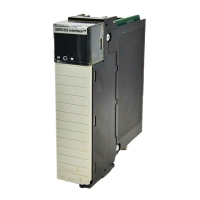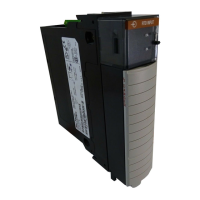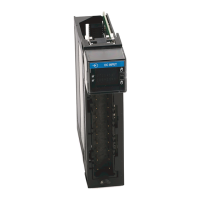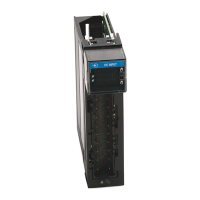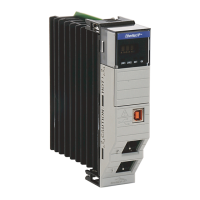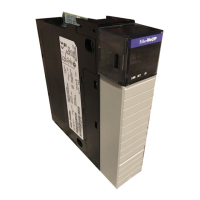110 Rockwell Automation Publication MOTION-UM002E-EN-P - June 2016
Chapter 8 Configure Camming
Linear and Cubic Interpolation
The resultant calculated cam profiles are fully interpolated. The linear or cubic
interpolation between adjacent points determines the slave axis position if the
following is true:
• The current master position or time does not correspond exactly with a
point in the cam array that is used to generate the cam profile.
In this way, the smoothest possible slave motion is provided. The MCCP
instruction accomplishes this condition by calculating coefficients to a
polynomial equation that determines slave position as a function of master
position or time.
Each point in the cam array that is used to generate the position cam profile can
be configured for linear or cubic interpolation. Electronic camming remains
active through any subsequent execution of jog, or move processes for the slave
axis. This condition allows electronic camming motions to be superimposed
with jog, or move profiles to create complex motion and synchronization.
Time Cam Profile
A time cam profile functions similarly to a cam drum driven by a constant
speed motor.
A time cam profile is also defined by using a table of points. However, with the
time cam profile, the table contains the following information:
• An array of master axis time values
• An array of slave axis position values
The master axis time values correspond to slave axis position value. When the
master axis reaches a specific point in time, the slave axis moves to a specific
position as configured in the cam profile.
Time cam profiles are used with Motion Axis Time Cam (MATC)
instructions. Upon execution of this instruction, the slave axis is synchronized
with the master axis.
See the Logix5000 Controllers Motion Instructions Reference Manual,
publication MOTION-RM002
, for more information on how to configure
the position cam profile in an MATC instruction.
Linear and Cubic Interpolation
Time cams are fully interpolated. The linear or cubic interpolation between
the adjacent points determines the slave axis position if the following is true:
• The current master time value does not correspond exactly with a point
in the cam table that is associated with the cam profile
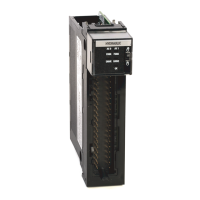
